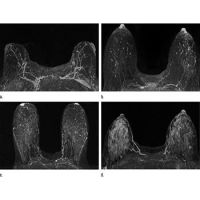Researchers at The University of Texas at El Paso (UTEP) claim that a new "breast cancer risk analysis system" is on track to predict if and when breast cancer will appear. Although not yet complete, the computer-aided detection system has proved successful in early studies — with an accuracy of 70 percent when it came to predicting which women would develop breast cancer by their next mammogram and which women would not.
The new technology "will be able to inform doctors about the patient’s risk of developing cancer within a few years,” says electrical engineer Wei Qian, PhD, who runs UTEP’s Medical Imaging Informatics Lab.
The UTEP study, reported in the journal Computerized Medical Imaging and Graphics, is expected to save some women from getting unnecessary annual mammograms.
“For low risk populations, it would be better to increase the interval between their screenings,” according to Wenqing Sun, a doctoral student in electrical engineering at UTEP. “Mammograms frequently generate false positives and can be an unnecessary mental burden.”
In a real-life scenario, the risk analysis process would begin with a woman receiving a regular mammogram. The x-ray images would then run through the system, which analyses multiple features, including texture and breast density — an important factor in predicting the risk of breast cancer. Based on previous studies, women with extremely dense breasts are five times more likely to get breast cancer than those with low breast densities.
The new technology would calculate overall density and highlight any suspicious areas that are extremely dense. It also would alert the doctor about any differences between the two breasts. As Qian points out: “Breasts are naturally symmetrical. But if there’s a loss of balance between the two, that could signify a high possibility that a change is occurring.”
For women who show signs of high risk, the system would suggest they be screened for breast cancer more aggressively. This could mean getting a mammogram again in the next six months instead of a year. Those who have a low risk for developing cancer in the next one or two years could be advised to return for a mammogram two or three years later.
By separating patients into positive (high-risk) and negative (low-risk) groups, the UTEP team believes breast cancer screenings could become more efficient and cost-effective and less worrisome, and save lives.
Source: University of Texas at El Paso
Image Credit: UTEP’s Medical Imaging Informatics Lab
The new technology "will be able to inform doctors about the patient’s risk of developing cancer within a few years,” says electrical engineer Wei Qian, PhD, who runs UTEP’s Medical Imaging Informatics Lab.
The UTEP study, reported in the journal Computerized Medical Imaging and Graphics, is expected to save some women from getting unnecessary annual mammograms.
“For low risk populations, it would be better to increase the interval between their screenings,” according to Wenqing Sun, a doctoral student in electrical engineering at UTEP. “Mammograms frequently generate false positives and can be an unnecessary mental burden.”
In a real-life scenario, the risk analysis process would begin with a woman receiving a regular mammogram. The x-ray images would then run through the system, which analyses multiple features, including texture and breast density — an important factor in predicting the risk of breast cancer. Based on previous studies, women with extremely dense breasts are five times more likely to get breast cancer than those with low breast densities.
The new technology would calculate overall density and highlight any suspicious areas that are extremely dense. It also would alert the doctor about any differences between the two breasts. As Qian points out: “Breasts are naturally symmetrical. But if there’s a loss of balance between the two, that could signify a high possibility that a change is occurring.”
For women who show signs of high risk, the system would suggest they be screened for breast cancer more aggressively. This could mean getting a mammogram again in the next six months instead of a year. Those who have a low risk for developing cancer in the next one or two years could be advised to return for a mammogram two or three years later.
By separating patients into positive (high-risk) and negative (low-risk) groups, the UTEP team believes breast cancer screenings could become more efficient and cost-effective and less worrisome, and save lives.
Source: University of Texas at El Paso
Image Credit: UTEP’s Medical Imaging Informatics Lab
References:
Qian W, Sun W, Zheng B et al. (2014) Prediction of near-term risk of developing breast cancer using computerized features from bilateral mammograms. Computerized Medical Imaging and Graphics DOI: http://dx.doi.org/10.1016/j.compmedimag.2014.03.001
Latest Articles
breast cancer, Breast density, breast cancer screening, mammogram, UTEP
Researchers at The University of Texas at El Paso (UTEP) claim that a new "breast cancer risk analysis system" is on track to predict if and when breast ca...



























